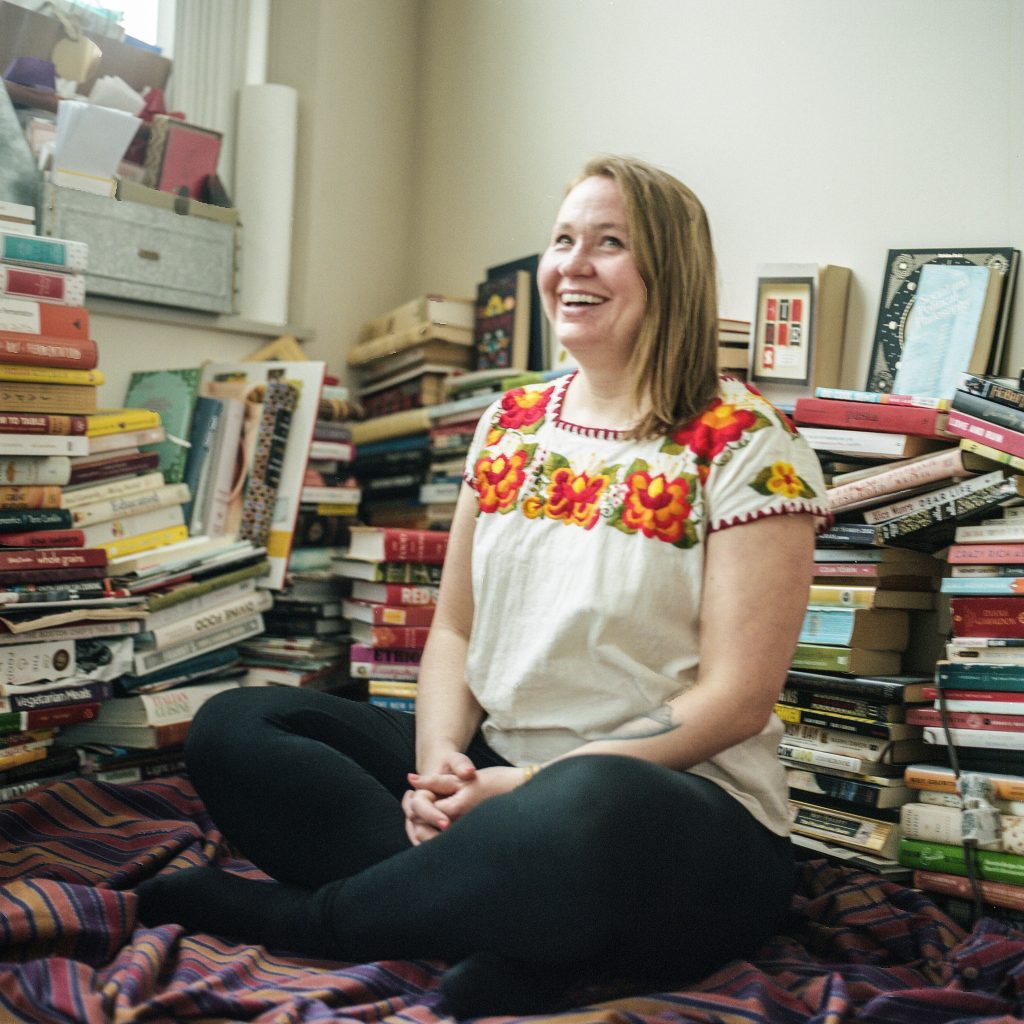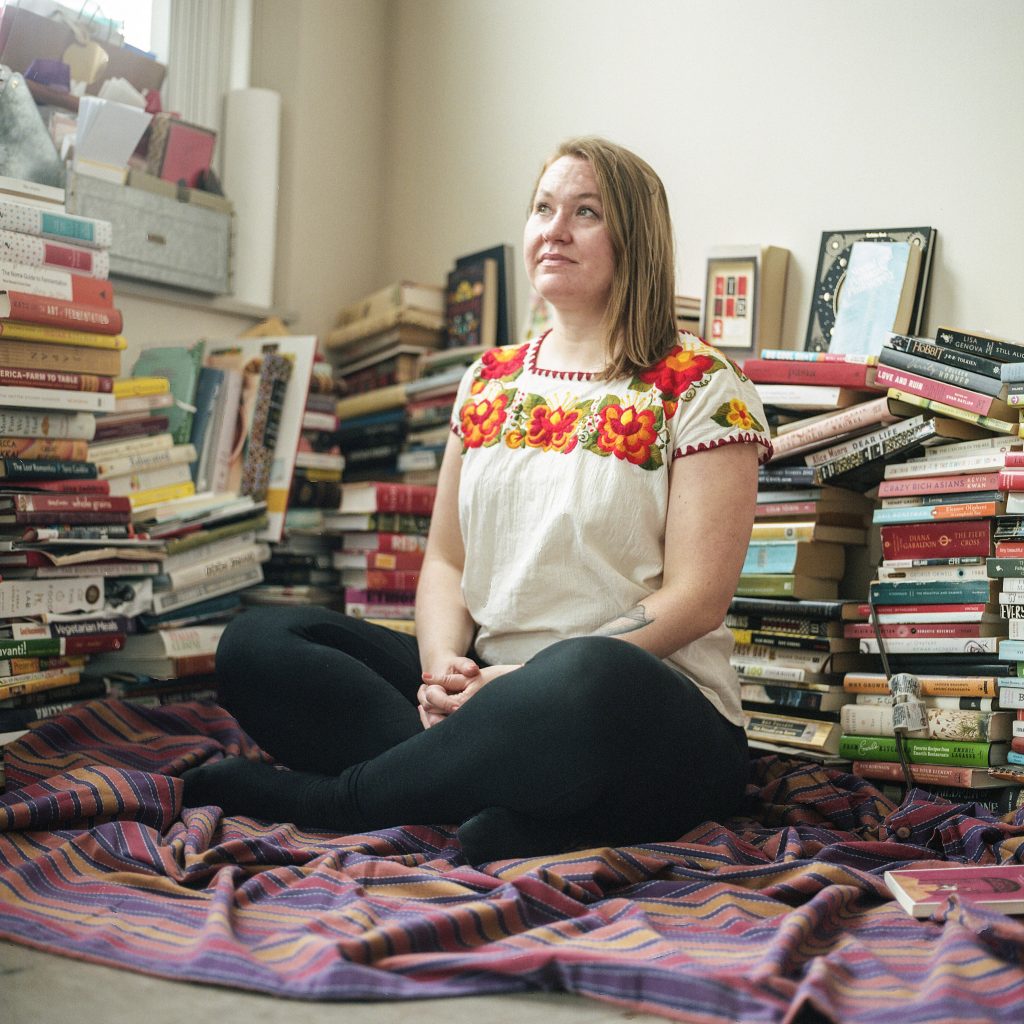Food Consumer
Laughter
Earth
Contentedness
Earth
Contentedness

I hear laughter and smell the earth and ocean. I can also taste the earth, because Paco’s hands were covered in soil. He was gardening, his hands in the earth, so when he would open the pine nut to share with us, we would taste the soil on his hands.
I have a condition called aphantasia, which means that I cannot visualize images in my mind’s eye. For that reason, I am not a very visual person, but am more in tune with my other senses, particularly taste and smell. I have always been a lover of food, and curious about exploring different cuisines. Learning I had aphantasia helped me to realize that most of my memories relate to taste, or smell, and that those senses take me back to a particular place, or time.
I was about five years old and I recall a lush green garden. My family lived in Spain because my father was serving in the U.S. Navy. We lived in a Naval housing community in Rota, which is on the Atlantic coast. Our house was right across the street from the ocean, and my memory tells me it felt tropical, or at the very least Mediterranean. The homes were all red-tiled and terra-cotta. The backyard was very luscious because Paco would come once a week and take care of the plants. It felt tropical, with palm trees and vivid colored flowers.

I learned about my aphantasia as an adult, when I was about 25. I was talking to my family about imagining things, and they asked, “Can you see an elephant in the room?” and I realized that I cannot. So, it all started to make sense. I always read a lot (my mom owns an independent bookstore), and I think through things analytically, and through my senses. I realized that most of my childhood memories involve taste and smell. Aphantasia is just a different way that my brain works.
We were four young kids under the age of ten, so there were toys everywhere. There was always a little family chaos. Paco was older, so he was slow and intentional. In the Spanish style, he took siestas and rode a moped around. I recall coming up to his moped, him warmly greeting me. My siblings and I would be playing and he would be gardening, and every once in a while he would share with us a coffee candy out of his pocket. As a five-year-old, I remember that bitter flavor, but then he would give us some pine nuts which would offset the taste. It came directly from the tree, so it tasted very herbal and natural. He would have a big smile on his face, and it was very wrinkly and full of freckles.
I have re-told this story about Paco many times, because whenever I have pine nuts, I always think of him, his smile, and him preparing them for us to eat in the backyard. With aphantasia, when I recall this memory, the taste is the most vivid part, along with his smile. I can’t see his smile, or the setting, but it is a feeling…a feeling of warmth, trust, and safety. This memory is vivid specifically because of food. My twin sister doesn’t remember this experience, and I believe it is because of how strong my sensory memory is. When I eat pine nuts, or coffee candy, I think about the first time I ever had it. Many of my other food memories are the same way. After Spain, I grew up in rural Northern-Michigan. The food was Midwestern and we didn’t have many restaurants with cuisines from all around the world. We mainly ate burgers, steaks and potatoes. So, a lot of my memories center around the first time I tried Indian food, or Ethiopian food, and who I was with. I have always loved food. My mom always likes to share my childhood stories of how excited I was to eat, and try new things. I still do! I get excited to eat all the time!
I hear laughter and smell the earth and ocean. I can also taste the earth, because Paco’s hands were covered in soil. He was gardening, his hands in the earth, so when he would open the pine nut to share with us, we would taste the soil on his hands.

This memory is very much about community, and communal eating. Something that my very American family of six people did not always take the time to do, share a long meal and conversation. We were always busy, running to the next thing and didn’t take the time to savor the moment. These communal dining experiences have taught me to slow down, savor the food, the moment and the people I am surrounded by. It taught me that food can be a uniting force, even when people don’t speak the same language, practice the same religion, etc.
Not only was there a tremendous age gap, but there also was a language barrier. But we found it easy to cohabitate in the backyard on lazy, sunny afternoons. Whenever I eat pine nuts, or have a traditional coffee candy, I think of that backyard and of Paco.
My relationship with food is very loving, and rooted in emotions. I love food, am curious about cuisines from different cultures, and am always seeking new tastes and smells. But I also rely on food as a source of comfort, and absolutely have emotional ties to food in my everyday life. During the COVID-19 pandemic, food was a stabilizing force in my life. I could count on trying a new recipe or going back to a trusted one in order to give me comfort during a turbulent and tumultuous time in the world.
Biography:
Karrie has been working in the non-profit space in Chicago for over 10 years. She currently works as the Director of Leadership Giving at Mikva Challenge, a non-profit dedicated to empowering young people to participate in our democracy and become good citizens. By night she is getting a social purpose MBA through the Baumhart Scholars program at Loyola University in Chicago. She loves eating, cooking and exploring new foods, traveling around the world and reading international fiction.
[ Karrie Miner is photographed in her friend’s home in Chicago, Illinois on 120mm film. ]